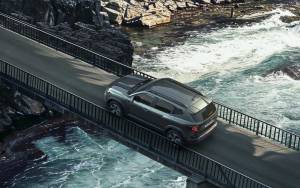
The All-New Renault Duster is Here
After a two-year absence from the South African market, the mighty Renault Duster is back...
 12 March 2025
12 March 2025 
[Photo by Tamzyn Degoumois]
Flash is extremely helpful when taking photographs in dark areas, at night or in dim lighting especially if you don’t have a tripod handy. However, it can be very difficult to learn and master at first and can often leave you feeling frustrated at how your photograph’s turn out. To help you out here are Drive South Africa’s 5 top tips for flash photography.
If you use direct on camera flash and aim the light source at your subject you will most likely end up with bad red eye in your flash photographs. To avoid red eye you can:
When in auto mode a camera flash is fired when the through-the-lens metering senses low ambient light. The flash fires to illuminate the subject so it can be picked up by the camera sensor. But the use of flash renders the subject dull and flat, can alter the white balance and negatively affect the quality of the light in the photograph. Override auto mode to have more control and make use of natural light. But be careful of accidentally setting your exposure for too long as this can cause motion blur.
Flash as the primary light source is quite hard and unflattering and casts unattractive shadows on subject’s faces so avoid using flash as a primary source where possible. If you have to use flash, use it in slow sync mode instead, the flash will fire for longer and this gives you a better and more natural illumination to your scene.
If using an SLR (Single Lens Reflex) make sure you select a shutter speed that syncs with the firing of the flash. If you select a shutter speed which is above the maximum shutter speed of your camera flash you will end up with a partially black photograph. Read your camera manual to check your maximum synch speed.
Using Flash to compliment ambient light
Instead of using flash as the primary light source use flash as a secondary source of light, to fill in any shadows or dark areas created in a photograph by a harsh key light. This photography technique is called fill flash.
You can use fill flash when:
Using direct flash often produces disappointing results, casting shadows and unattractive shapes on subject’s faces. To avoid this try bouncing flash off a reflective surface such as ceilings, walls or anything white in your area. Bouncing light diffuses and softens it, minimising harsh shadows on your subject which results in a more balanced photograph.
Most importantly remember using flash correctly comes with plenty of practice. So don’t get discouraged if you don’t get it straight away, rather take a step back and ask yourself how you can improve.
Taking advantage of the natural beauty of South Africa to practice is rather easy if you have transport around the areas you need to visit. Car hire South Africa have various vehicles on offer, feel free to have a look.